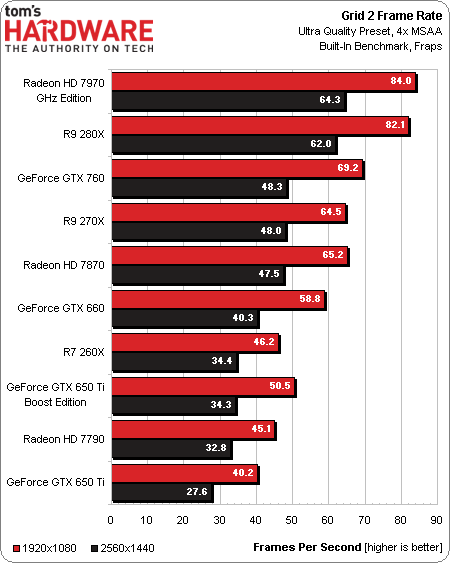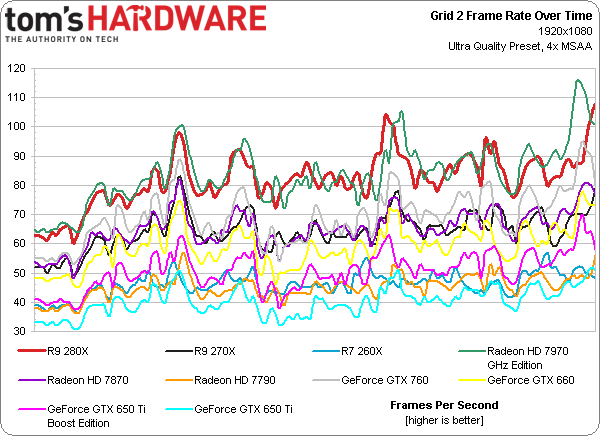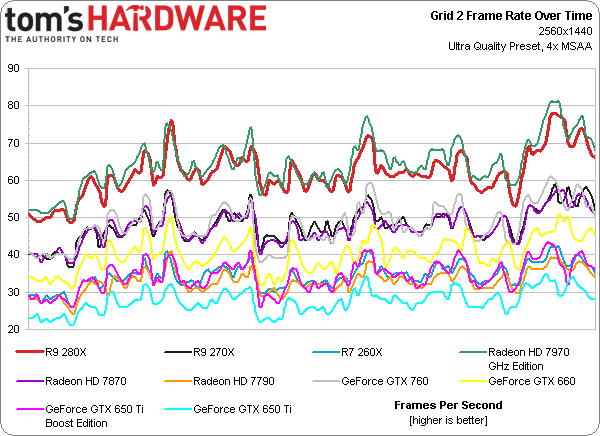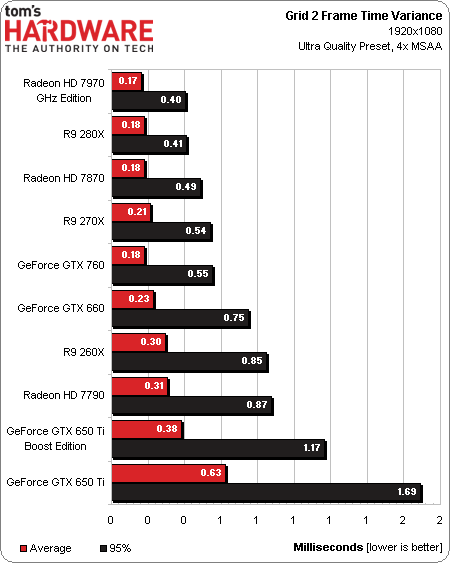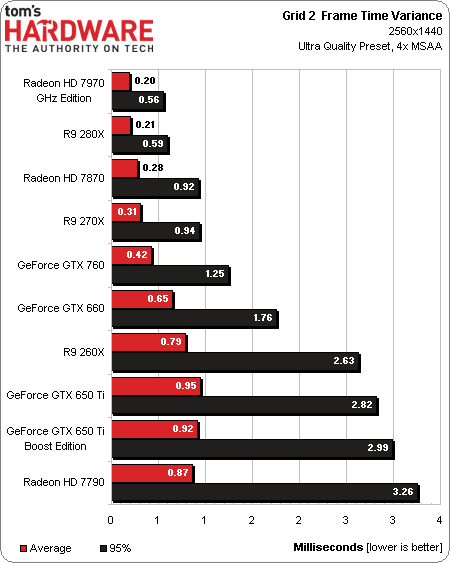AMD Radeon R9 280X, R9 270X, And R7 260X: Old GPUs, New Names
AMD is introducing a handful of new model names today, based on existing GPUs. Do the company's price adjustments make this introduction newsworthy, or will the excitement need to wait for its upcoming Radeon R9 290 and 290X, based on fresh silicon?
Results: Grid 2
Bigger numbers in Grid 2 mean that even mid-range cards serve up playable performance—so long as you match them up to high-end platforms with plenty of memory bandwidth. In this case, an overclocked Core i7-4960X and four channels of DDR3-1866 memory are what carry the Radeon HD 7870 and R9 270X to almost 50 FPS average rates at 2560x1440.
Tahiti justifies its price premium over the GeForce GTX 760’s GK104 at 2560x1440. The highest-end Nvidia card we’re testing, which sells for $250, barely slides in ahead of the Pitcairn-based boards. Again, Radeon HD 7870 for $180 looks like a pretty sweet deal for as long as it’s around, right?
At the bottom end, R7 260X comes in just ahead of the Radeon HD 7790, which matches its price. The GeForce GTX 650 Ti Boost, selling for $10 extra, does nothing extra for performance at 2560x1440. And its advantage at 1920x1080 isn’t significant enough to change the gaming experience.
Although performance through our Grid 2 benchmark run jumps up and down, creating fairly busy lines, we still see three clumps of cards. Unfortunately for Nvidia, its GeForce GTX 760 is part of the second clump where AMD’s cheaper Pitcairn-based cards show up.
Frame time variance is very low in Grid 2, even when we look at the worst-case 95th percentile numbers.
Get Tom's Hardware's best news and in-depth reviews, straight to your inbox.
Current page: Results: Grid 2
Prev Page Results: Crysis 3 Next Page Results: The Elder Scrolls V: Skyrim